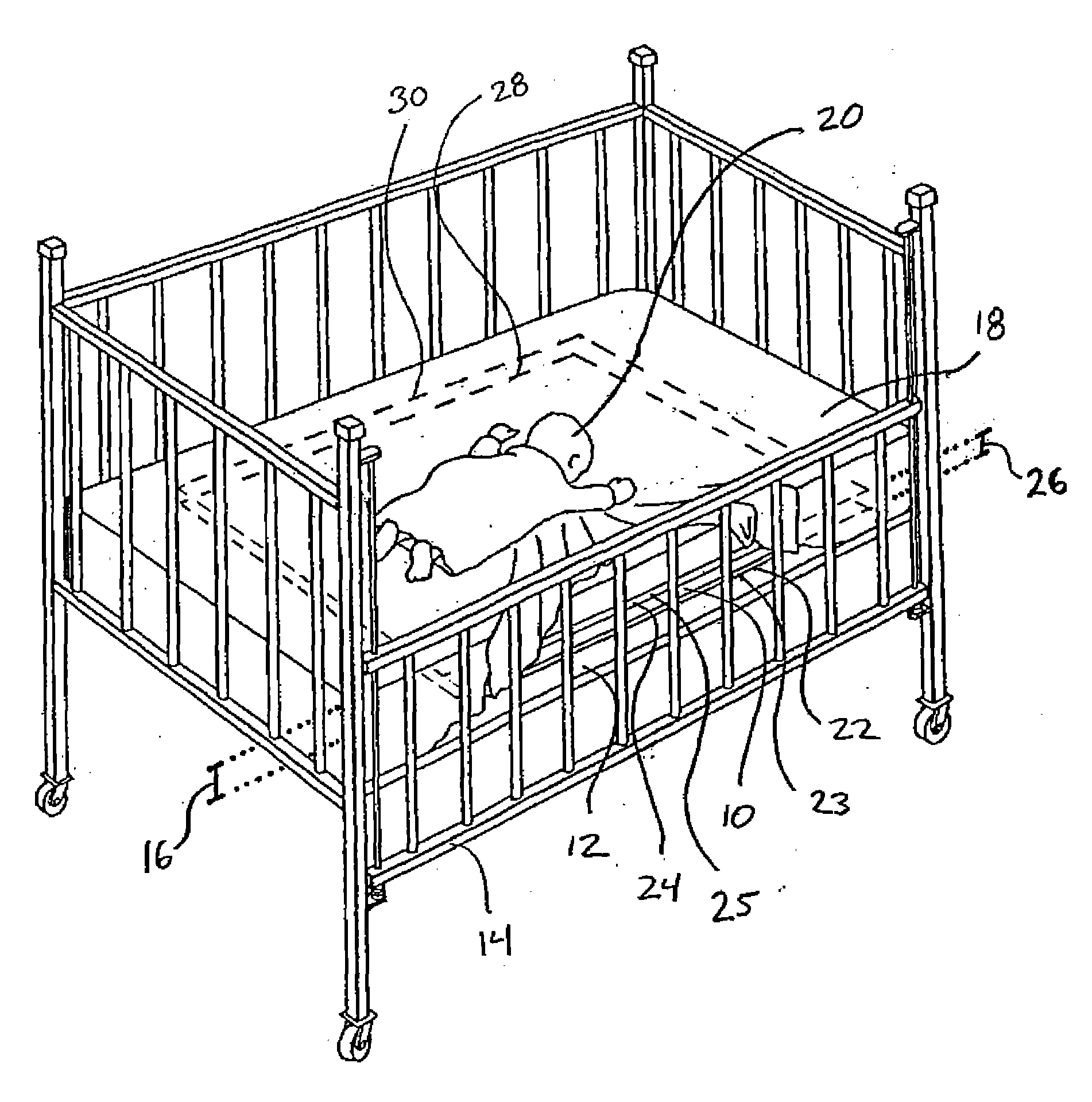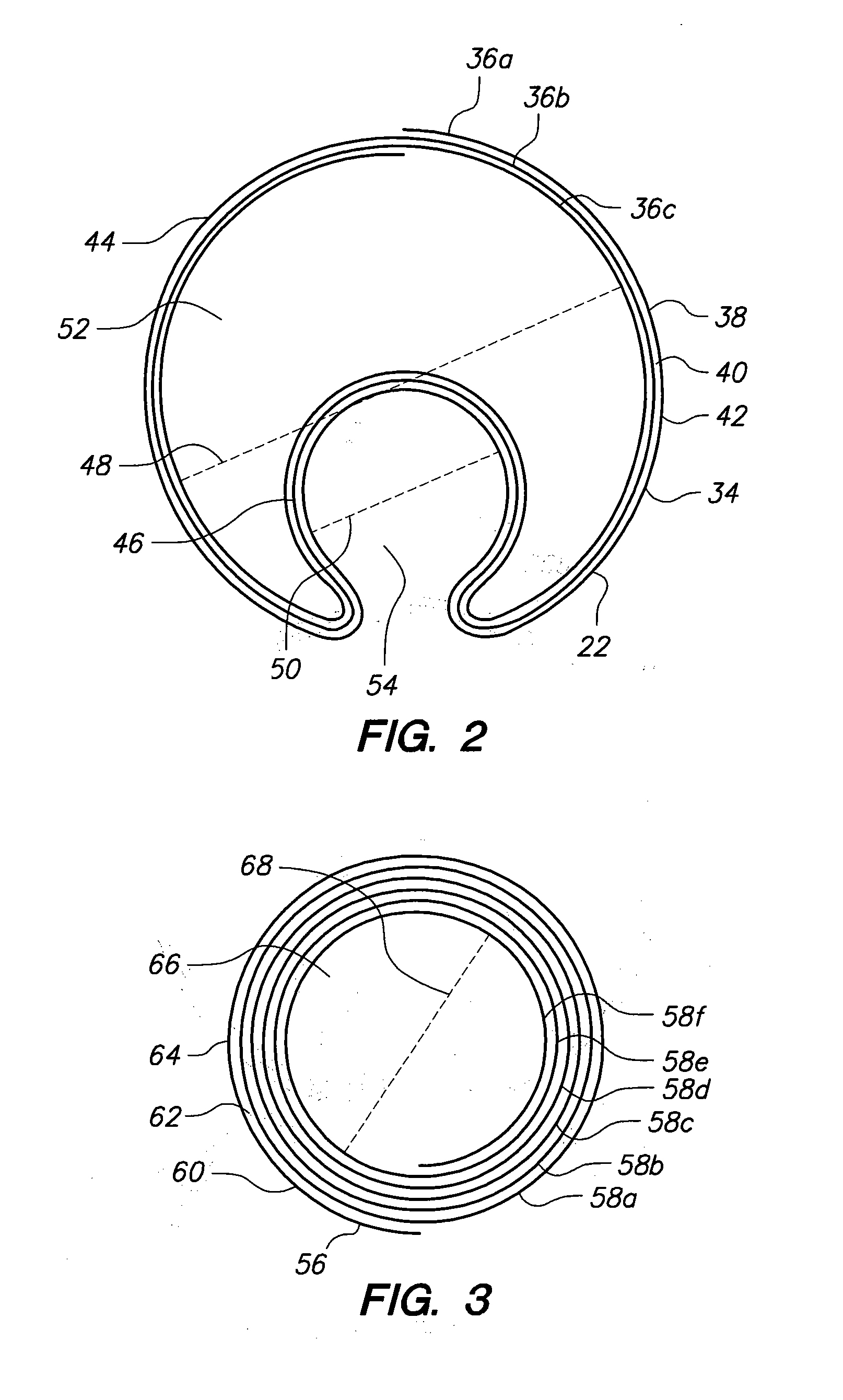Sensor for measuring relative conductivity changes in biological tissue
a technology of relative conductivity and biological tissue, which is applied in the field of electromagnetically impedance sensor, can solve the problems of long-term chronic use of current electromagnetic impedance system, in which electrodes are placed on the patient's chest, may be impractical, and inherently lack the level of precision that may be useful, and achieve the effect of reducing the parasitic capacitance between turns
- Summary
- Abstract
- Description
- Claims
- Application Information
AI Technical Summary
Benefits of technology
Problems solved by technology
Method used
Image
Examples
Embodiment Construction
[0018]Referring initially to FIG. 1, a sensor for detecting changes in electrical conductivity in an environment is shown and designated 10. For exemplary purposes, the sensor 10 is mounted within a mattress 12 in a crib 14 at a predetermined distance 16 from the surface 18 of the mattress 12. Further, it can be seen that an infant 20 is sleeping on the surface 18 of the mattress 12. As shown, the sensor 10 includes a transmit antenna 22 mounted on a board 23 and a receive antenna 24 mounted on a board 25. The antennas 22, 24 are separated by a selected distance 26. Specifically, the antenna 22 defines a plane 28, and the antenna 24 defines a substantially parallel plane 30 at the selected distance 26 from the plane 28. For purposes of the present invention, the antenna 22 transmits a signal that is received by the antenna 24. Thereafter, the received signal is monitored and electromagnetic impendence detection is used to detect changes in the electrical conductivity of the environm...
PUM
 Login to View More
Login to View More Abstract
Description
Claims
Application Information
 Login to View More
Login to View More - R&D
- Intellectual Property
- Life Sciences
- Materials
- Tech Scout
- Unparalleled Data Quality
- Higher Quality Content
- 60% Fewer Hallucinations
Browse by: Latest US Patents, China's latest patents, Technical Efficacy Thesaurus, Application Domain, Technology Topic, Popular Technical Reports.
© 2025 PatSnap. All rights reserved.Legal|Privacy policy|Modern Slavery Act Transparency Statement|Sitemap|About US| Contact US: help@patsnap.com



